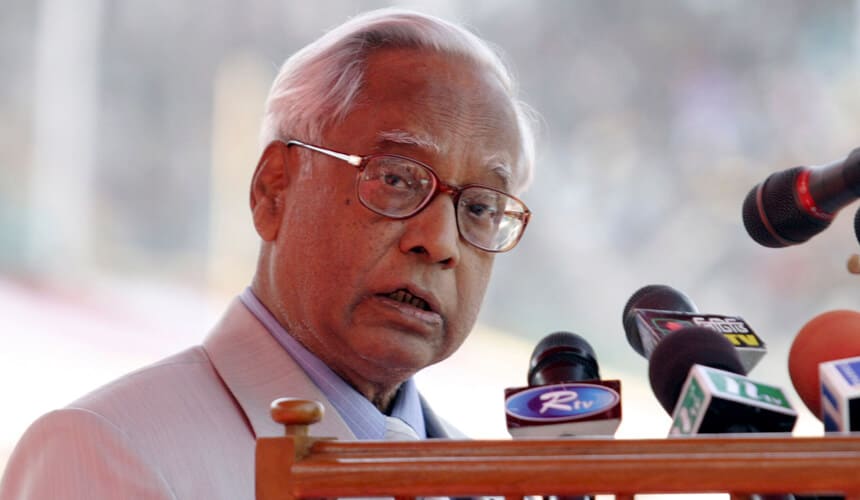Iajuddin Ahmed
Ahmed’s Turbulent Political Reign
Iajuddin Ahmed MS1958, PhD1962 led a Bangladeshi government mired in painful political tension, turmoil, and collapse.
His rise to the presidency of the South Asian nation of 140 million people came by default and his ultimate downfall was rooted the government’s inability to manage the country’s corruption-ridden election system.
Ahmed was a professor of soil science at Dhaka University and held several administrative posts there before leaving for government service.
His expertise led him to join the as an adviser to the caretaker government in 1991, and he later chaired the Public Service Commission. Ahmed also led the nation’s University Grants Commission, and in 2002, he was named vice chancellor at the State University of Bangladesh.
That September , the Elections Commission named Ahmed the nation’s president when two other candidates’ nomination papers were tossed out as invalid.
Four years later, he also became head of the caretaker government, which was preparing for elections in January 2007. Opposition parties took to the streets in violent protests over corruption and claiming that the voter rolls were stuffed with 14 million bogus names. The army was deployed to quell rising unrest in December.
“We need a flawless voter list to ensure that the elections are free, fair, and credible,” Ahmed said in January 2007, as he stepped down from the government, cancelled scheduled elections and declared an army-backed state of emergency.
The Economist called it “the coup that dare not speak its name.”
Ahmed said his resignation was “essential to keep the economy going and maintain law and order.” He remained as president, though in a largely ceremonial post.
Although Ahmed’s presidential term was set to end in September 2007, he stayed on until February 2009 under a constitutional provision requiring a president to remain in office until their successor is elected.
Ahmed died following heart surgery in Bangkok in 2012.
 48° F
48° F